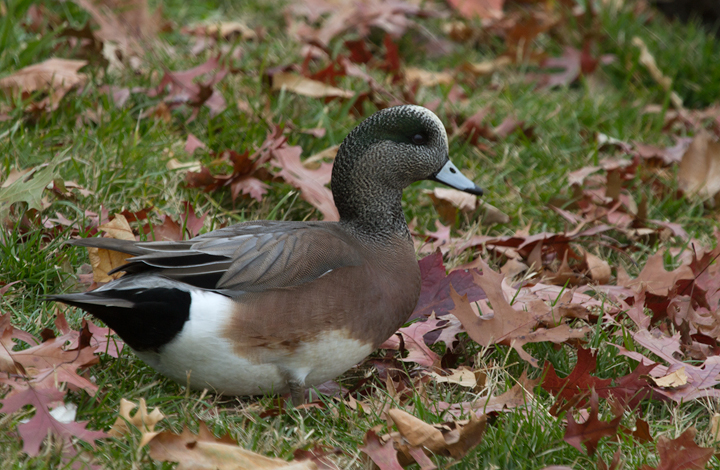American Wigeon (Anas americana)
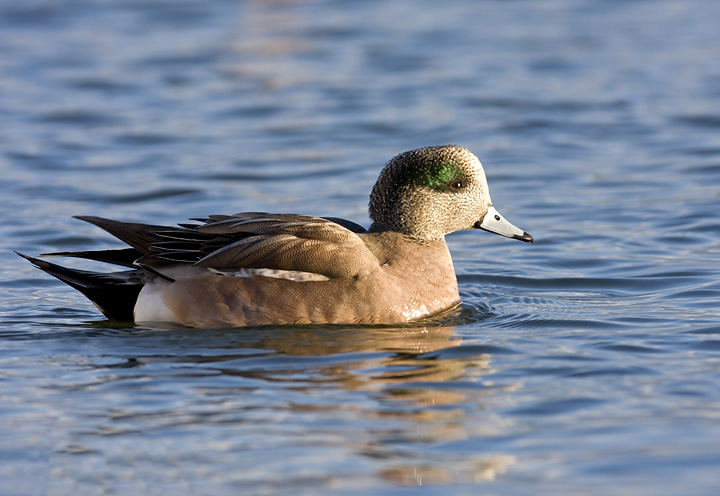
Above: A drake American Wigeon along the Cambridge waterfront (Dorchester Co., Maryland, 2/10/2008).
Below two: Another drake photographed at the same site (2/27/2005).
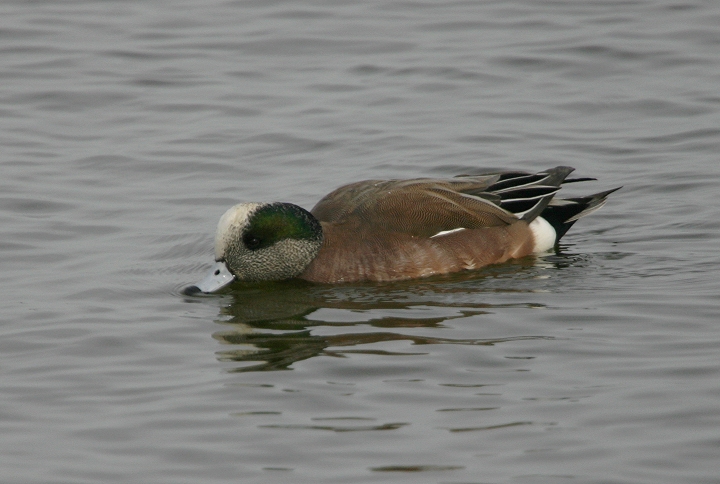
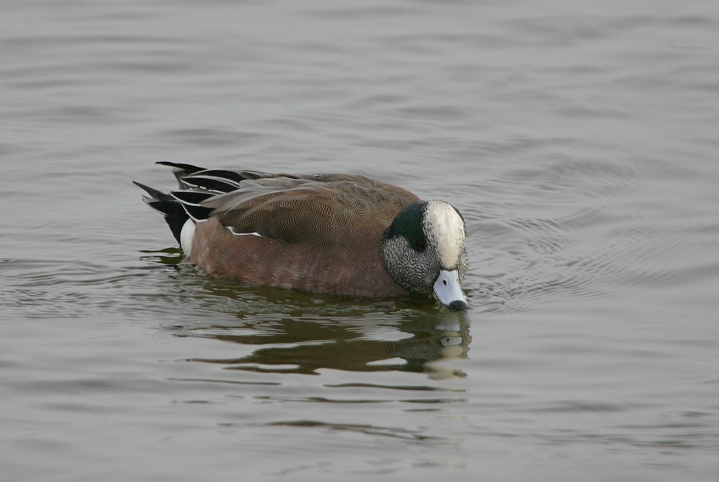
Below: A female American Wigeon on the Choptank River in Dorchester Co., Maryland (2/27/2005).
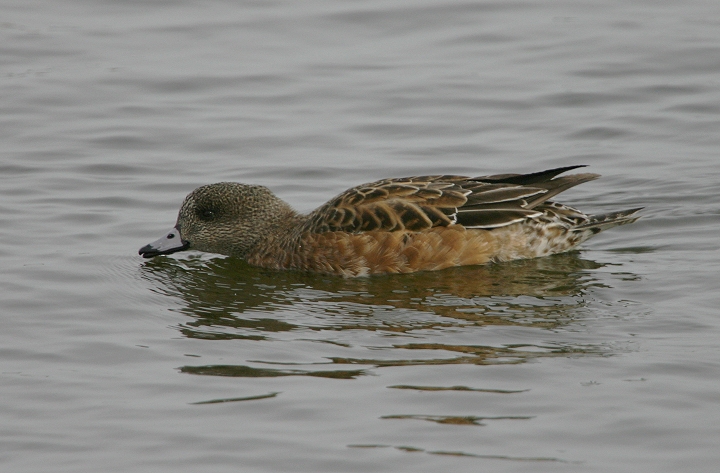
Below: A drake American Wigeon in Worcester Co., Maryland (11/12/2010).
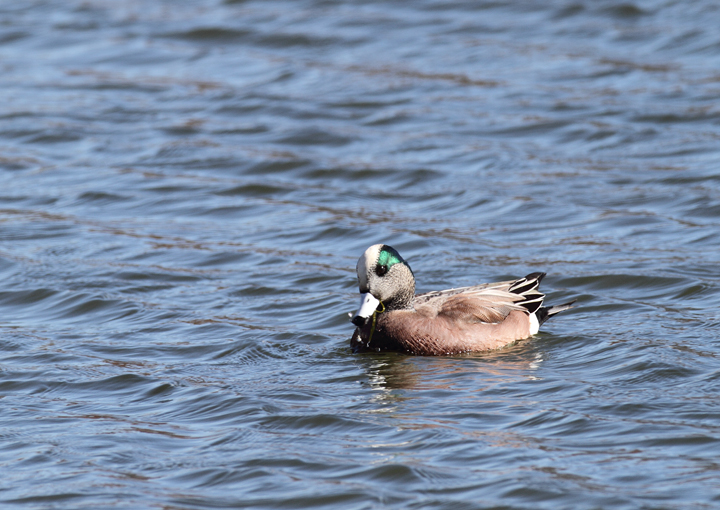
Below: Commensal feeding--the American Wigeon at this Worcester Co. pond were taking advantage of the aquatic vegetation being brought to the surface by the many diving birds such as American Coots, Ring-necked Ducks, and Ruddy Ducks.
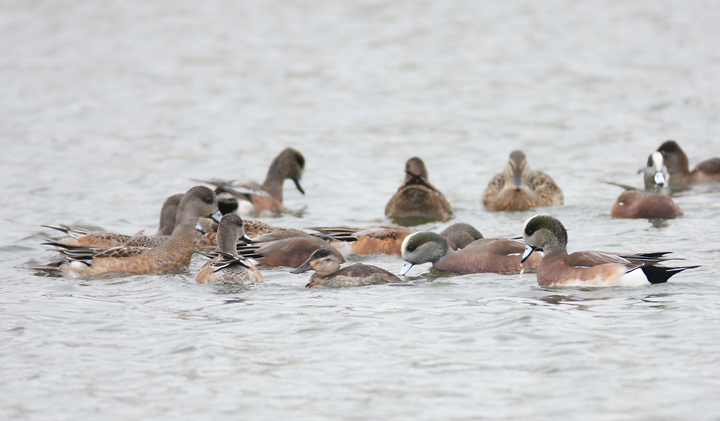
Below: A pair of American Wigeon feed on submerged vegetation in coastal Worcester Co., Maryland (11/2/2008).
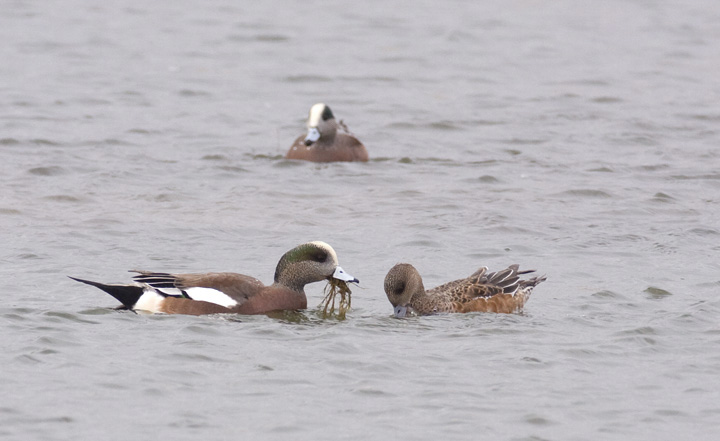
Below: An interesting female American Wigeon (perhaps impossible to rule out a hybrid American x Eurasian) that was originally considered as a candidate for Eurasian. Note fairly uniform coloration between head and lower parts (but with some contrast); warm tones on the head (but mostly at the rear), lack of black markings at the base of the bill (uncommon but OK for American, apparently), and most of all structure (decidedly American). This last element is what kept the discussion of this bird alive (thanks, Matt Hafner, who remained troubled by the structure). Compare the shape of this bird and the definite Eurasian above. Discussion also brought to light that the lack of black line is highly suggestive, but not diagnostic as many believe. Discussion of challenging individuals like this one is so valuable to improving both our own and our collective identification skills. Same location as above near Ocean City, Maryland (12/5/2010). Thanks to Matt Hafner, Marshall Iliff, Mikey Lutmerding, and Dave Ziolkowski for contributing valuable input to the ID discussion.
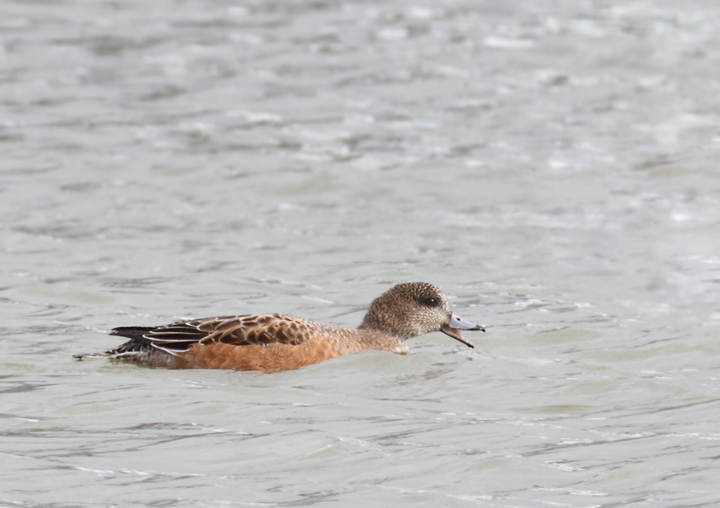
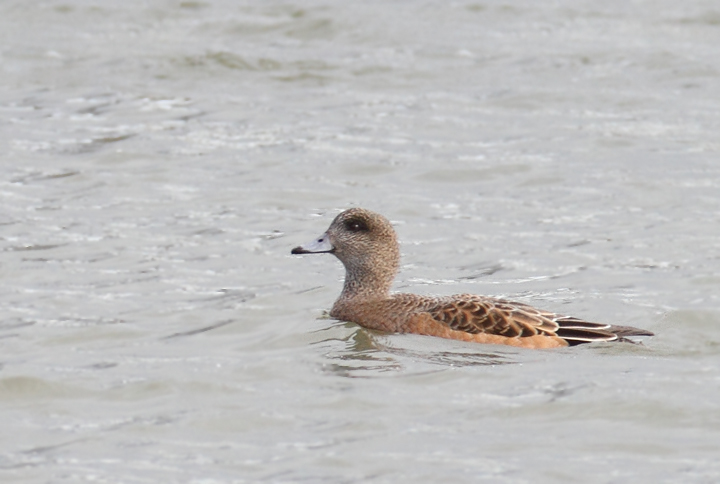
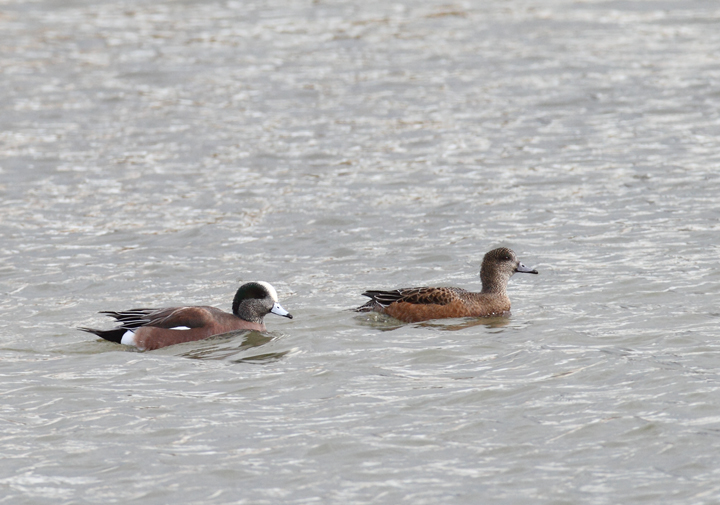
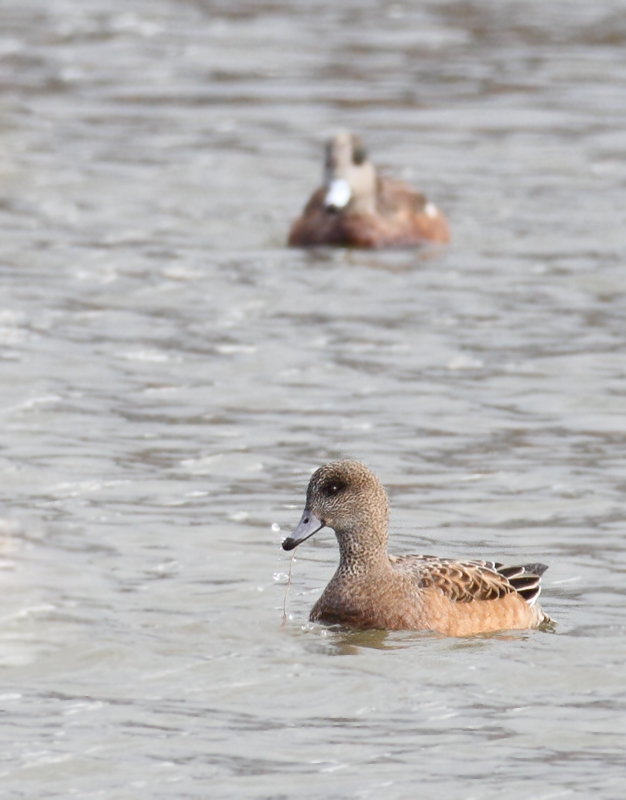
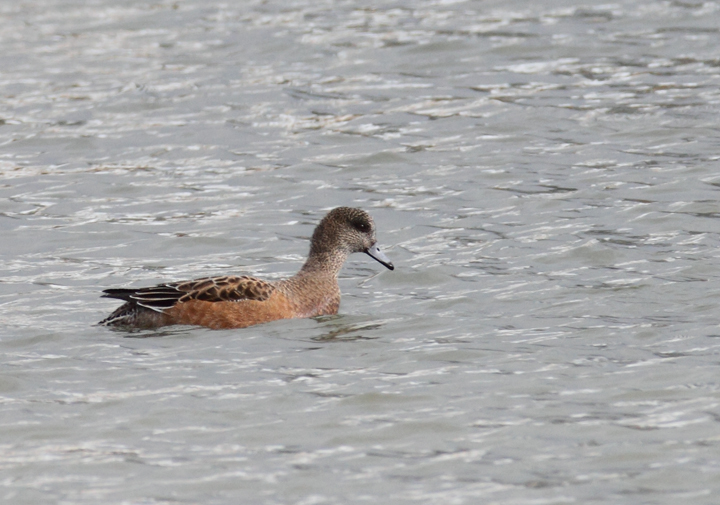
Below: A drake American Wigeon in Patterson Park, Baltimore, Maryland (12/2/2013).
